
To win at business or life, adversity has to be encountered, faced, fought and defeated. There is no other way. No options. You either beat it, or it beats you. Win, or you lose.
Simple. Right?
No.
It’s never black and white. Never win or lose. Something always bleeds over. Always. Sometimes good – sometimes bad. Sometimes funny – sometimes sad. Most times a little of both. But hopefully each experience brings with it life lessons and blessings.
This is one such story – but I didn’t know it at the time. Like many mystical magical moments in life, it was gone before I had time to come to grips with my own inadequacy. It was gone before the numbness of an ordinary, normal, average life was pierced by the spear of an angelic character, steeled by a life done wrong.
Take no umbrage, no offense, at the point-of-view of the narrator. It’s a personal recollection. A recollection colored by fond remembrances of two spirits sideswiping each other on life’s unfathomable path.
Sometimes there’s nothing sadder than humor.
SMART VS. SMART-ARSE
Several years ago I got fired for being too smart. That was my recollection. Everyone else’s recollection was I was fired for being a smart-arse.
So, I had to find a new job. My first interview went well (not). I was promptly turned down for the CEO position at a well-known hosiery company. Now granted, I didn’t have much (any) experience in the creation, production, marketing, sales or distribution supply chain of the hosiery industry. But, being of the gender I am (a manly kilt-wearing man), I was pretty certain I could articulate the benefits and unique selling proposition (USP) of the product in a compelling and profitable way.
REJECTION EJECTION
Upon rejection (there was some confusion upon my departure. The mistaken impression that I was ejected from the premises may have been surmised had one been watching), I forlornly began wandering the streets of Cincinnati, with my head drooped just about level with my navel.
Walking like this has some disadvantages. Clarity of vision is one. I ran into something hard, looked up, and before me was … an apparition, an event, a pre-destined meeting, a saint.
A WOMAN IN A WHEELCHAIR.
But Steve, you say to yourself, that’s not terribly uncommon. A little melodramatic aren’t you?
No.
She had no legs. And …
No arms.
She controlled the operation of her motorized wheelchair by blowing through a tube. I was humbled. Dropped low. Deep. My problems were now nothing but a smashed proton in the unfathomable singularity of a black hole.
She was navigating the sidewalks of Cincinnati by herself.
Alone.
To educate people unfamiliar with Cincinnati on how daunting a task this can be, Cincinnati sidewalks were built before sidewalks had been imagined and possibly even before the invention of the wheel. A rut in the sidewalk is typically referred to as an “improvement.”
I saw her get ready to enter a building and leaped forward to open the door. As I did, she spoke, my apparition, my saint, with an angelic voice.
“Hey, Bozo, what do you think I am some useless quadriplegic?” she said.
I guess even saints have rough days.
TERM OF ENDEARMENT
I considered the reference to me as “Bozo (the clown)” as a term of endearment. Why? Because my face had turned absolute white, my nose vivid red, my hair popped out like a bad 70’s Afro (I used to have a good 70’s Afro … I know the difference).

“I’m sorry, I was just trying to help.”
“You want to help? Get in here and buy something.”
She was the owner of the shop. And, in one of those weird synchronicities not fully explained, but hinted at in Einstein’s Special Theory of Relativity, she sold, you guessed it, women’s apparel. Mostly hosiery.
Her name was Antonia Maria, and that’s all the personal history I ever really learned about her.
MARKET RESEARCH
I was so overwhelmed, humbled, and awed at the obvious obstacles and adversity that Antonia Maria was overcoming daily, if not nanosecond-by-nanosecond, that I bought 37 pairs of every imaginable type of hosiery (under the guise of real-time market research for my next hosiery CEO job application).
Her eyebrows arched a bit (well, maybe more than a bit) when I piled them up on the counter. And, with my usual sophisticated schmoozing aplomb I explained I had an extended family.
“Lots of females,” said I.
For nearly a year, once a week, I stopped by her shop and bought hose. We became Forrest and Bubba Gump-ette close.
“Hey Bozo.”
“Hey Antonia Maria.”
Each visit was an inspiration. A lifting up, not sad, not melancholy, but a moving, life-affirming, sharing of the human spirit and journey. To trek through this world as she did, daily overcoming the obstacles (physical, economic and social) and adversity she faced … was truly amazing.
Occasionally she’d catch me in a mathematical obfuscation.
“How many females in your extended family?”
“28.”
“Was 25 last week.”
“Newborns … very fertile, my family.”
RIGHT THING. RIGHT TIME
In addition, she was quite the enterprising entrepreneur, having an in-depth, innate grasp of contextual marketing concepts. Antonia Maria had the incredible knack of saying the right thing, at the right time, to the right person, to move them deep into the buying cycle.
“I’m guessing you’ll need a few extra pair of hose this week then?”
I nodded.
I AM RUDE AND DUMB
Yes, I admit. Freely. Authentically. Rude and dumb. I honestly throw myself on the altar of “what was I thinking?” I could not, often times, refrain from staring at her when I felt she wasn’t looking. I wondered how she did it.
How she coped. How she smiled. How she woke each day and got out of bed to go to work. And a million other “hows” that crossed my misfiring neurons.
Then, it was over.
She disappeared. Her shop closed. No signs. No explanations. No forwarding address. I inquired, but no one knew anything. I hesitated to do any extensive investigation for fear of what I might learn.
It’s said that the eyes are the windows of the soul. If that’s true, Antonia Maria’s soul was on fire. Her iridescent brown-green eyes absorbed and expressed life. Faith. Spirit. Strength. Hope.
To this very moment, I remember everything about Antonia Maria. Everything so incredibly resilient, hopeful, happy, glad and beautiful she ever said.
HOW DID SHE DO IT?
I don’t know. I’m not smart enough to answer that. Never will be. I couldn’t do it. Too weak.
I do know that Antonia Maria had a vigorous life-affirming charismatic spirit that shone through all her adversities. She had a heart wider than the Grand Canyon that would take on any issue with uncharacteristic straight-forwardness. And …
NEVER
Not once, let me repeat this, not once, did she ever complain about … or for that matter even explain her physical condition.
If I had to guess how she did it?
Spirit. Heart. Guts. Faith … and life-enabling technologies.
The technological marvels wrought by industry research, development, application, and availability that enabled Antonia Maria to face, fight, defeat and triumph over her physical obstacles were, unless you actually saw it, almost ineffable.
Time passed.
UNFORESEEN DOWNSIDE
Eventually, our relationship had a downside that ultimately gave me the opportunity and skills to overcome an adverse moment in life. Last month, my wife, grandmother, daughter and aunt were rummaging through my basement workshop for “yard sale” items.
HOW MANY PAIRS OF HOSE???
They found 2,093 pairs of hose.
When confronted by this gathering storm of frumpettes, I quickly used my marketing abilities to “reposition” this disturbing find and utilized a UES (Unique Explanation Statement) touting the find as in-depth “market-research.” This was supposed to overcome the obstacle of false impression embedded in their minds.
It failed. Utterly. Miserably.
WAR AND PEACE
Only one supporter swallowed the UES – my dog, Tolstoy. (Named so not because he looks like Tolstoy, but because he always backs me during war or peace … provided he receives his weekly stipend of Scooby snacks.)
But being the absolute ruler and king of the castle, I decided to imperiously tell the gathering storm of frumptettes to mind their own business.
That didn’t work either.
So, I confronted this impending doom of an adverse moment and took decisive action. I grabbed the donkey by the horns and used a tried-and-true tactic. One that successful Venture Capitalists use almost daily.
And it worked. The tactic?
THE EXIT STRATEGY
###
The Path feature image courtesy of H. Kopp Delaney. Please visit his site. One of the best artistic talents of our times.
I was working on a difficult story when I ran into a perplexing problem. A total roadblock. How to simplify a complex story – one that involved quantum physics, cancer, depression, hope against all odds and the ephemeral topic of “miracles?”
The story was about a terminally ill cancer patient.
Third Time Was a Charm, but So Were the First and Second Times
He also happened to be a licensed clinical neuropsychologist and an international best-selling author who actually ended up surviving his “terminal” illness, after dying, not once, not twice … but three times.
Part of the story delved into the concept of synchronicity―finding meaning in causally unrelated (“acausal”) coincidences and events―events that greatly stretch the probabilities of chance and even belief sometimes. The doctor in the story believed the concept of synchronicity helped him understand and survive his “terminal” disease. The trick, he believed, was to become aware of these happenings (events and coincidences) and to seek meaning in them.
Some synchronicity events create puzzling paradoxes that seem beyond our understanding of reality. They conflict with fundamental principles of our reason, but nonetheless, they happen.
” A paradox is not a conflict within reality. It is a conflict between reality and your feeling of what reality should be like.” – Richard Feynman, American physicist
Synchronicity was a term coined by Dr. Carl Jung to describe these types of happenings. During his many years of research and medical practice, he documented multiple cases that could not be explained by mere probabilities of chance. Dr. Jung came to believe if you paid attention to these events, they could add meaning to your life. They might even help and guide you in a time of personal distress.
All of this was out of my league. Way out. But I was open to at least thinking about the possibility of synchronicity. The problem was how to explain it in clear, simple language and at the same time, incorporate the quantum physics, non-locality and observer participancy elements that were also part of the story. Then, weave them so that the seams didn’t show. Like I said, way out of my league.
Examples?
 Some coincidences could be interesting little ”What the “H” …” moments.
Some coincidences could be interesting little ”What the “H” …” moments.
You go to a bookstore looking for a particular book, but can’t remember the title.
You walk down an aisle and a book falls off the shelf to the floor in front of you.
It’s the very book you’re looking for.
Odd, but nothing life-shattering.
Perplexing though.
But some synchronicity events could be life-saving and life-altering, like the following two real-life events.
Ordinary Reasons but No Ordinary Miracles
“All 15 members of a church choir in Beatrice, Nebraska, due at practice at 7:20, were late on the evening of March 1, 1950.
The minister, his wife and daughter had one reason (his wife delayed to iron the daughter’s dress), one girl waited to finish a geometry problem, one couldn’t start her car, two lingered to hear the end of an especially exciting radio program, one mother and daughter were late because the mother had to call the daughter twice to wake her from a nap, and so on. The reasons seemed rather ordinary.
But there were 10 separate and quite unconnected reasons for the lateness of the 15 persons.
It was rather fortunate that none of the 15 arrived on time at 7:20, for at 7:25 the church building was destroyed in an explosion.” – From “Lady Luck: The Theory of Probability,” by Warren Weaver
The Odds?
What to make of that? What does it mean? What are the odds of something like that happening? Is there possibly an undiscovered connection between minds that transcends the known laws of the universe? Are our minds connected to a “collective unconscious” as Dr. Jung believed? And …
What to Make of This?
One of my all-time favorite books, a classic called “Search for Meaning” written by Dr. Victor Frankl described a synchronicity event that changed his life forever. He had a successful neurology and psychiatry practice in Germany in the late 1930’s, but he was Jewish. He knew he had to leave Germany or face death. Dr. Frankl applied for a Visa and, after several years, it was approved. But there was a problem.
“I was asked to come to the US consulate to pick up my visa. Then I hesitated: Should I leave my parents behind? I knew what their fate would be: deportation to a concentration camp. Should I say good-bye and leave them to their fate? The visa was exclusively for me.” – Victor Frankl, Search for Meaning
Dr. Frankl picked up the visa and went to visit his parents to talk about it. When he arrived, he found his father in tears. “The Nazis have burned down the synagogue.” Dr. Frankl noticed his father had something in his hand. He held it up. It was a fragment of marble his father had saved from the synagogue. It had some scorched writing on it.
One
One letter engraved on the marble. It was the beginning of one of the Ten Commandments. Which one? The commandment?
כבד את האבא שלך ואמא שלך
“Honor thy father and thy mother.”
Dr. Frankl made his decision. He canceled his visa. It changed his life forever. He was sent to the death camps – yes I said ‘camps’. He survived more than one death camp. “Search for Meaning” recounts that experience. Dr. Frankl eventually survived a terminal death sentence multiple times too.
Never Happened to Me
Strange, undeniably strange, and true. But nothing like that has ever happened to me. Not even the book falling off a shelf in front of me.
Until Now

But maybe I hadn’t been looking close enough because while finalizing the research for the story, trying to figure out how to simplify it, I happened across an article I’d written a couple of years ago. Synchronicity? I don’t know. But I hadn’t thought about the story for a long time.
It was also about, remarkably, another terminally ill cancer patient. A woman I knew. It had been exceptionally hard to write, but was one of those rare moments when you feel humbled to be asked to do something that might actually make a difference―if only for a short time.
How to Boil it Down?
Trying to complete that story was a challenge for me too. Remarkably similar to the one I was working on.
Living While Dying
The raw emotions involved, the brutal facts, the stark realities, and worse, trying to communicate what it’s like facing the everyday issues of actually living while you’re dying―in plain, simple language―without getting lost in data or minutiae that really didn’t matter.
Happening upon that article at exactly that time helped solve my problem. It removed the block.
The Paradox?
It made me ask the question that, as I think about it (which I try to avoid … thinking that is), still makes my head want to explode.
Was happening upon that article purposeful or simply an accident?
I struggle with the thought of it being purposeful. It conflicts with my view of reality.
If it wasn’t purposeful, then it was an accident. But if it was an accident, it was “acausal”―a synchronistic event that only I could draw meaning from.
Either way it sent my kilt a-flutter, sorta like knowing the Boogie Man was watching.

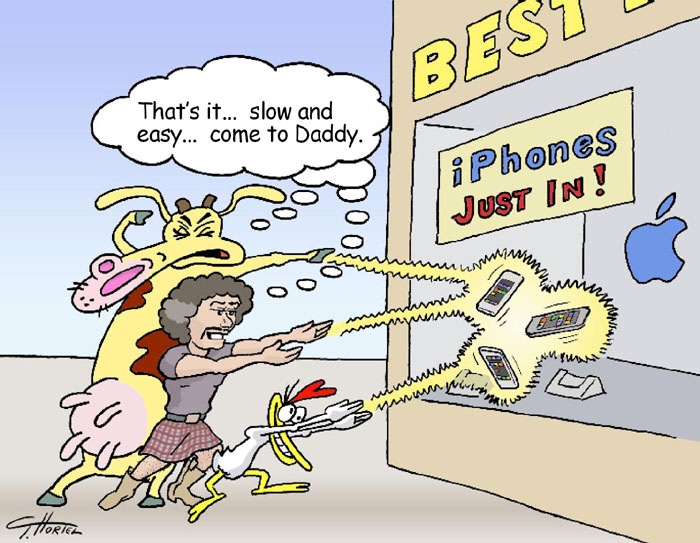
Featuring an interview with Lynne McTaggart, author of “The Intention Experiment.”

“This important book makes a good case that we are on the verge of another revolution in our understanding of the universe.” – Arthur C. Clarke
I Had Good Intentions
I fully intended to keep my 2012 New Year’s resolutions. I knew it would be hard. But I had good intentions. I had good intentions. Really.
However, even though I held out a long time – 6 days, 21 hours and 30 minutes short – of the first full week of January – I didn’t make it. I fell short. Badly. Some of it was simply from a sense of loss (also sometimes known as grief) that had weakened my resolve. Donkey O’Tee, my long-time co-writer and close friend, had left me to pursue his own career as an author (below).
Media Star

Donkey O’Tee had massive pre-sales. Five copies at least. The media loved him. He took a simple idea, complexified it to nearly an undecipherable obfuscation, eschewing logic and reason, and suddenly he was a media know-it-all star.
But, before Donkey O’Tee went on his book tour, he sensed my despair – my utter hopelessness. Donkey’s are like that. Sensitive. So, he sent two cousins of his to help me out while he was gone on tour. “Hollywood veterans” he assured me. Their names were Cal and Chichen (pronounced “chikken”) Itza (figure out which is which?) from Yucatan, a state in Mexico.
Cal, Steve and Chichen Itza

But they were a little too perky for me.
I slipped into a deep funk. I pondered why my good intentions always went awry. My hair grew out of control (which horrified my friends who were all going bald), and I seemed to shrink – grow shorter from the weight of the deep thought in which I was engrossed. Why did my “good intentions” always go so bad? Then … almost by accident (but not quite – that’s what the word almost means) I ran across a book called “The Intention Experiment – Use Your Thoughts to Change the World,” by Lynne McTaggart.
Your Life of Business … or Business of Life
I jumped eyes first into it. Speed-read it (I completed the introduction). And wow … not just a wishful “think your way to greatness and riches” bunch of crapola, but a book backed by top-notch scientific evidence. On the frontier of science, for sure, but backed by and working with an international team of renowned scientists to measure and create a “Science of Intention.” To prove your thoughts and intentions can be scientifically measured and make a real difference in this world, in your life of business … or the business of your life. The book even had an action plan and an invitation to all readers to join and be a part of the world’s largest experiment – “THE INTENTION EXPERIMENT.”
I was ecstatic.
I rushed out of the house down to the electronics store brimming with good intentions.
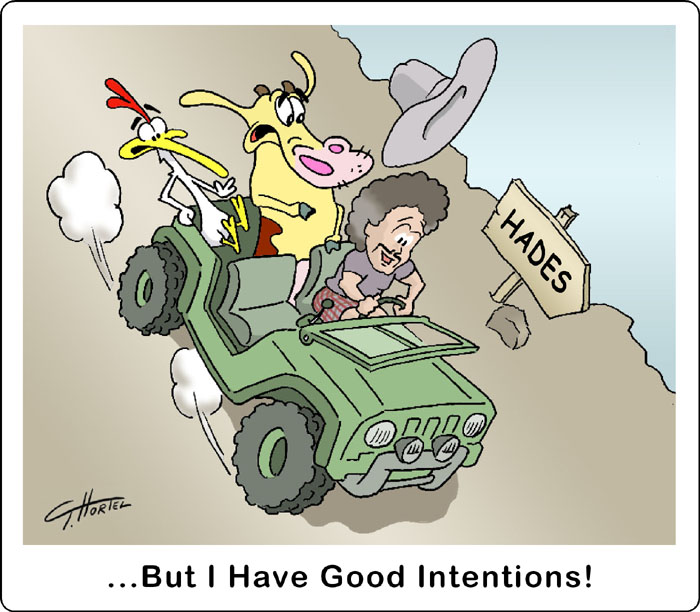
Oozing good intentions flowing like a volcanic river.
Yes, a river of good intentions.
That was me.
A NEW I-PHONE TWO WOULD BE MINE!

BUT, things didn’t quite work out the way I had envisioned.
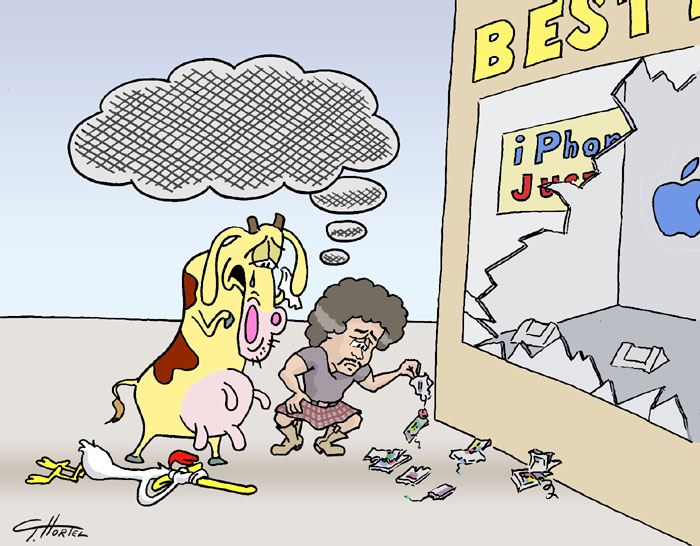
This business of thinking and intention was a bit more complicated than I thought. Or at least I think I thought I thunk that. So as usual I had to go to the source for more information.
ENTER Lynne McTaggart
Lynne is an award-winning author of five books, including “The Field,” which has been published in 14 languages. “The Field” was a major influence on the wildly successful U.S. cult classic, “What the Bleep Do We Know?” and Lynne starred in the BLEEP’s full version, “Down the Rabbit Hole Quantum.”
Steve: Hi Lynne. I tried the intention thing … it didn’t really work too well for me.
Lynne: Did you read the book?
Steve: Sorta.
Lynne: Sorta. What’s that mean in English?
Steve: Oh, I forgot you were from England. Well, it means I got carried away after reading the introduction and tried to use my good intentions for something.
Lynne: For your own benefit?
Steve: … Maybe.
Lynne: Didn’t work so well, did it.
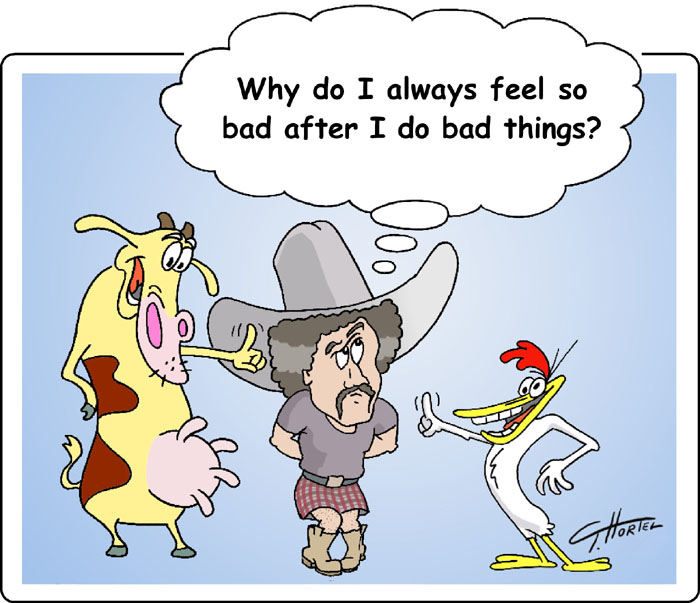
Steve: It worked, just not the way I wanted it to. So, what did I miss in the book? What did I do wrong?
Lynne: Besides just reading the introduction? The book is not about sending intentions to make a million dollars. The book is about using the science of intention philanthropically: healing wounds, helping children with attention deficit or patients with Alzheimer’s, counteracting pollution, global warming, that type of thing.
Steve: Oh. (Although the reader can’t see, chagrin may have crossed my face at this point). What else is the book about?
Lynne: “The Intention Experiment” is really some unfinished business I had with my previous book, “The Field.” It was a question (or questions) that was raised – there seemed to be anecdotal evidence to support and suggest that thoughts truly were things. A thought was not only a thing, but a thing that influences other things. A simple thought had the power to change the world. But the question was, could these thoughts and intentions be corralled, scientifically measured, tested … and used for good? The first part of “The Intention Experiment” attempts to synthesize all of the experimental evidence that exists on intention into a coherent scientific theory of how intention works, how it can be used in your life and what conditions optimize its effect.
Steve: So, an investigative scientific journey of the latest, greatest research on thought and intentionality. Who are some of the scientists involved?
Lynne: Robert Jahn, Dean Emeritus of the Princeton University School of Engineering; his colleague, psychologist Brenda Dunne, who runs the Princeton Engineering Anomalous Research (PEAR) laboratory; Dr. Gary Schwartz of the Center for Frontier Medicine in Biofield Science at the University of Arizona; and Fritz-Albert Popp, assistant director of the International Institute of Biophysics (IIB), in Neuss, Germany, to name a few.
Steve: Seriously eminent scientists. I’m familiar with Fritz-Albert Popp. His work on biophoton emissions, that DNA, molecules and cells all emit light that may be used for information communication is not only astoundingly earth-shaking and potentially has the ability to change humanity forever, but unfortunately is pretty much under-appreciated and unknown amongst 99.99% of the earth’s population. What are some of the interesting facts coming out of this research?
Lynne: You can get stronger, bigger muscles just by thinking. Some of the research findings include that athletes who do not physically exercise but only imagine their workouts can increase their muscle strength between 13 and 16 percent.
Steve: By just imagining the exercise?
He’s the Greatest!
Lynne: Yes. Imagine the implications for business. For sales. For marketing. Anyone can see tremendous improvements in their personal or business lives by rehearsing specific activities before actually doing them. Muhammad Ali, one of the greatest, if not greatest, athletes of all times was a master of thought, intention and visualization. He’s covered in the book.
Steve: Other results?
Lynne: Atoms can become entangled and behave as one single giant atom. Human bodies can act as transmitting and receiving antennas, living things demonstrate awareness of the well-being of other living things around them. A sizable body of scientific research, carried on for more than 30 years in prestigious scientific institutions around the world, show that thoughts are capable of affecting everything from the simplest machines to the most complex living beings.
Steve: What do you mean by “intention?”
Lynne: A textbook definition of intention is “a purposeful plan to perform an action, which will lead to a desired outcome,” unlike a desire, which means simply focusing on an outcome, without a purposeful plan of how to achieve it.
Steve: How could I (and the reader) use the science of intention?
Lynne: That’s in the second part of my book. I offer a blueprint for using your thoughts and intentions effectively in your own life through a series of exercises and recommendations. These exercises will show you how to “power up” your own thoughts and intentions to change your life and those around you. It’s also an exercise in frontier science – albeit personal.
Steve: And you do live group experiments via the internet?
Lynne: Yes, with the aid of our readers and our highly experienced scientific team, we conduct large-scale group experiments via the internet to determine whether focused intention has any scientifically quantifiable effects on selected targets.
Steve: How does one get involved?
Lynne: Go to our website for details The Intention Experiment. The first studies will be carried out by physicists Fritz-Albert Popp, vice-president of the International Institute of Biophysics in Neuss, Germany (www.lifescientists.de) and his team of seven; psychologist Gary Schwartz and his colleagues at the University of Arizona at Tucson; and Marilyn Schlitz and Dean Radin of the Institute of Noetic Sciences. You can see the rest of the scientific team on our web site too.
Steve: How will this be controlled? The WWW is full of World-Wide-Whackos, full of in-laws, outlaws and hackers who enjoy mucking things up.
Lynne: Website experts collaborated with our scientific team to design secure log-on protocols and to enable us to identify which characteristics of a group or aspects of their thoughts produce the most effective results.
Steve: An example?
Lynne: A patient with a wound. It is known that wounds generally heal at a particular, quantifiable rate with a precise pattern. Any departure from the norm can be precisely measured and shown to be an experimental effect. In this example, our aim would be to determine whether focused group intention will enable wounds to heal more quickly than usual.
Steve: Hmm. I knew that. And your ultimate plan for these experiments?
Lynne: They’re ambitious. To recruit hundreds of thousands, maybe millions of volunteers from around the world to participate in these series of web-based experiments, to try to tackle a number of societal ills. It will be the largest mind-over-matter study in history.
Steve: Can I take part in your experiments? Can I? Can I?
Lynne: I’d like to send a special letter about it to you and your friends, Cal and Chichen. Is that okay?
Steve: That’d be great! (feeling special … even if she did include the freako animals) Thank you, and best wishes to your readers and scientific team Lynne.
Lynne: Thank you. Intention me on Twitter if you get a chance.
TIME PASSED
True to her word – a special letter did arrive.
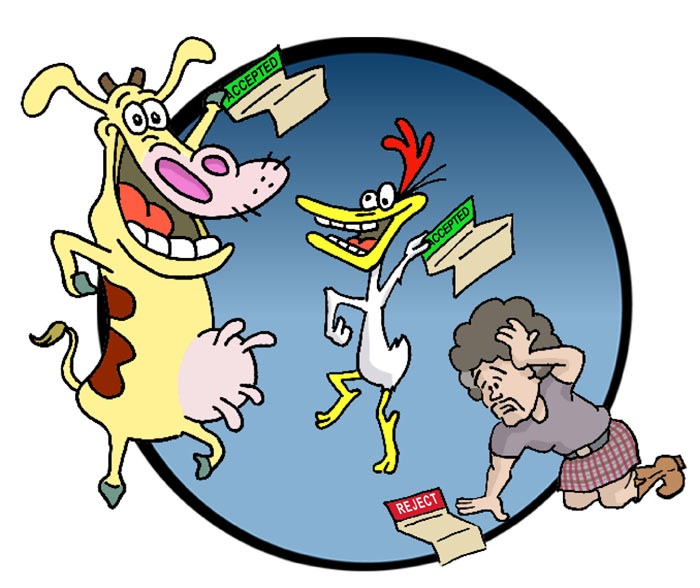
END:
Lynne McTaggart is an award-winning author of five books, including “The Field,” which has been published in 14 languages. “The Field” was a major influence on the wildly successful U.S. cult classic, “What the Bleep Do We Know?” and Lynne starred in the BLEEP’s full version, “Down the Rabbit Hole.” Lynne is an internationally recognized spokesperson on the science of spirituality and also co-executive director of Conatus, which publishes the UK’s most well-respected health and spiritual newsletters and online information including “What Doctors Don’t Tell You” and “Living the Field.”
About Steve Kayser
He’s currently too busy to write his bio because he’s engaged in a scientific experiment …


















Recent Comments
Lessons Learned from Hollywood STORY Guru Robert McKee